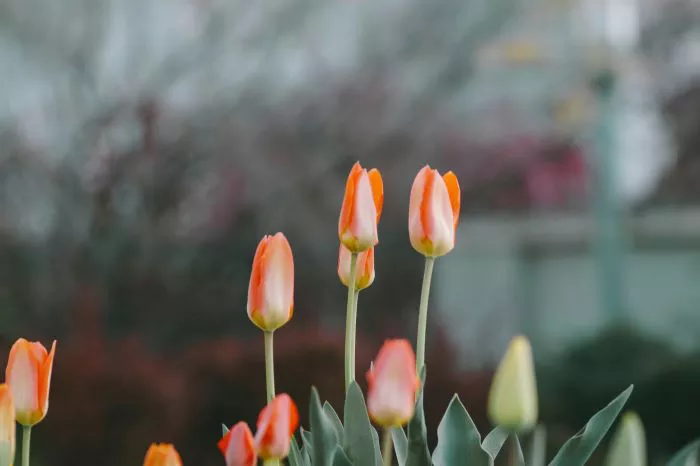In gardening, selecting the right plants is crucial for creating a sustainable and beautiful landscape. One important consideration is water usage. Many gardeners seek flowers that require minimal watering, especially in regions prone to drought or for those who prefer low-maintenance gardens. This article will explore various flowers that need the least water, their characteristics, and tips for growing them successfully.
Understanding Drought-Tolerant Flowers
Drought-tolerant flowers are plants that have adapted to survive in low-water conditions. These plants have developed various strategies to conserve water, such as deep root systems, waxy leaves, or the ability to store moisture. Choosing drought-tolerant flowers not only conserves water but also reduces the need for frequent maintenance.
Benefits of Low-Water Flowers
Selecting flowers that require less water has several advantages. First, it helps conserve water resources, which is increasingly important in many regions. Second, these flowers typically require less care, making them ideal for busy gardeners or those new to gardening. Lastly, drought-tolerant flowers often attract beneficial insects, such as bees and butterflies, contributing to a healthy ecosystem.
Top Flowers That Need the Least Water
Several flower varieties thrive in dry conditions and require minimal watering. Here are some of the best options for gardeners seeking low-water flowers.
Lavender
Lavender is a popular perennial known for its beautiful purple flowers and soothing fragrance. This plant thrives in full sun and well-drained soil. Once established, lavender is highly drought-tolerant. It requires minimal watering, making it an excellent choice for low-maintenance gardens. Additionally, lavender attracts pollinators and can be used in culinary dishes and herbal remedies.
Sedum
Sedum, also known as stonecrop, is a succulent that comes in many varieties. These plants have thick, fleshy leaves that store water, allowing them to thrive in dry conditions. Sedum flowers bloom in late summer and fall, providing vibrant colors to the garden. They prefer full sun and well-drained soil. Once established, sedums require very little water, making them ideal for xeriscaping.
Coneflower
Coneflowers, or Echinacea, are hardy perennials that produce large, daisy-like blooms. They are known for their resilience and ability to thrive in poor soil conditions. Coneflowers prefer full sun and can tolerate drought once established. They attract pollinators and are often used in wildflower gardens. Regular deadheading can encourage more blooms throughout the summer.
Black-eyed Susan
Black-eyed Susans are cheerful, yellow flowers that bloom from summer to fall. These perennials are known for their hardiness and ability to thrive in various soil types. They prefer full sun and can tolerate dry conditions once established. Black-eyed Susans are excellent for attracting butterflies and other beneficial insects, making them a valuable addition to any garden.
Yarrow
Yarrow is a perennial flower known for its feathery foliage and clusters of tiny blooms. It comes in various colors, including yellow, white, and pink. Yarrow thrives in full sun and well-drained soil. It is highly drought-tolerant and can survive in poor soil conditions. Yarrow is also known for its medicinal properties and attracts pollinators to the garden.
Russian Sage
Russian sage is a perennial plant with silvery foliage and tall spikes of purple flowers. It is known for its drought tolerance and ability to thrive in hot, dry conditions. Russian sage prefers full sun and well-drained soil. Once established, it requires minimal watering. This plant is also deer-resistant and attracts pollinators, making it a great choice for a low-maintenance garden.
Blanket Flower
Blanket flowers, or Gaillardia, are vibrant, daisy-like flowers that bloom from early summer to fall. They are known for their bright red, orange, and yellow petals. Blanket flowers thrive in full sun and well-drained soil. They are drought-tolerant and can thrive in poor soil conditions. These flowers attract butterflies and are excellent for adding color to a garden.
Gaura
Gaura is a perennial flower known for its delicate, butterfly-like blooms. It produces small, white or pink flowers on tall stems that sway gracefully in the breeze. Gaura prefers full sun and well-drained soil. Once established, it is drought-tolerant and requires minimal watering. Gaura attracts pollinators and adds a whimsical touch to any garden.
Caring for Low-Water Flowers
While low-water flowers are adapted to survive with minimal moisture, they still require some care to thrive. Here are essential tips for growing and maintaining these plants.
Soil Preparation
Before planting, prepare the soil by ensuring good drainage. Amending the soil with organic matter, such as compost, can improve its structure and fertility. This preparation helps create a healthy environment for root growth.
Watering Practices
When establishing low-water flowers, it is essential to water them adequately during their initial growth period. Once the plants are established, reduce watering frequency. Deep watering is preferable, as it encourages deep root growth and helps the plants become more drought-resistant.
Mulching
Applying a layer of mulch around the base of the plants can help retain moisture in the soil and suppress weeds. Organic mulches, such as wood chips or straw, can also improve soil quality as they decompose.
Regular Maintenance
While low-water flowers require less care, regular maintenance is still necessary. Remove spent blooms to encourage more flowering and prevent disease. Monitor plants for pests and diseases, and take action as needed.
Conclusion
Choosing flowers that need the least water is an excellent way to create a beautiful and sustainable garden. Lavender, sedum, coneflower, black-eyed Susan, yarrow, Russian sage, blanket flower, and gaura are all excellent options for low-water gardening. By understanding their needs and providing proper care, gardeners can enjoy vibrant blooms while conserving water. Embracing drought-tolerant flowers not only enhances the beauty of the landscape but also supports a healthier environment.


